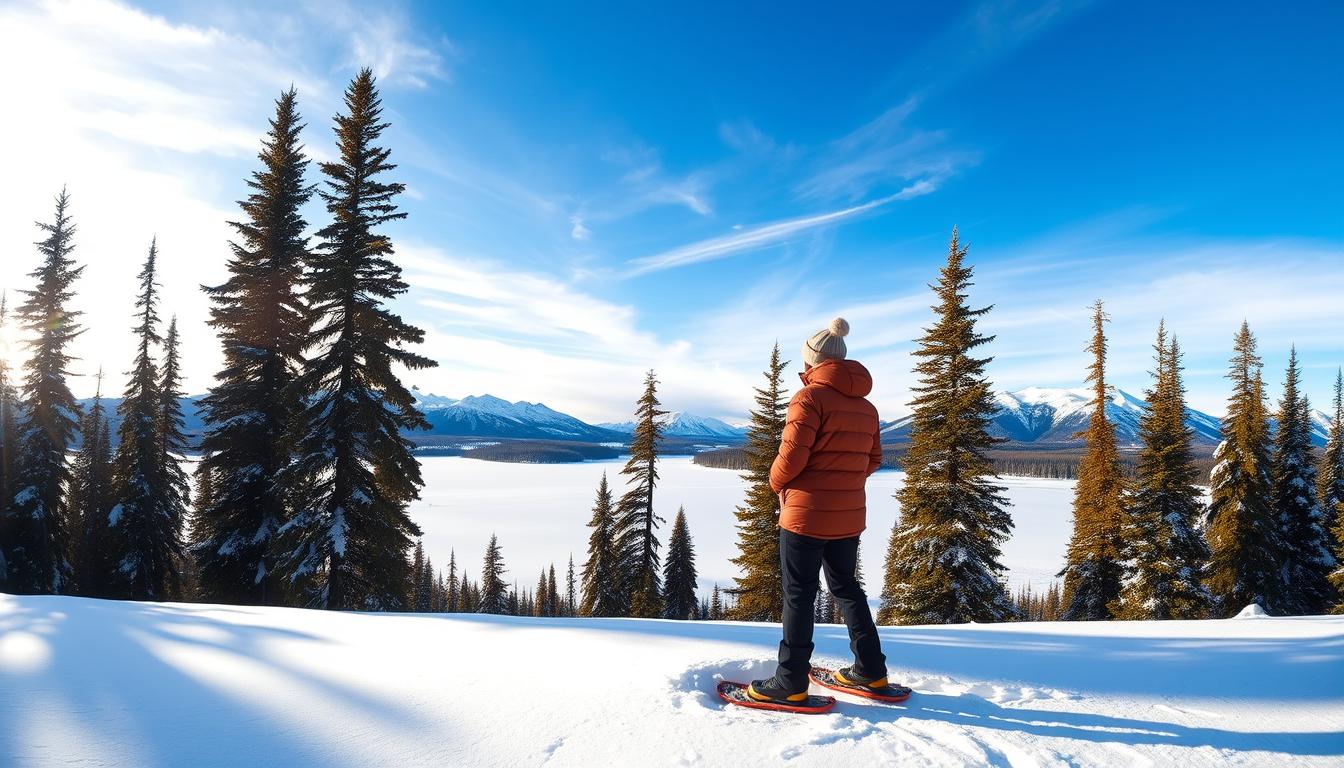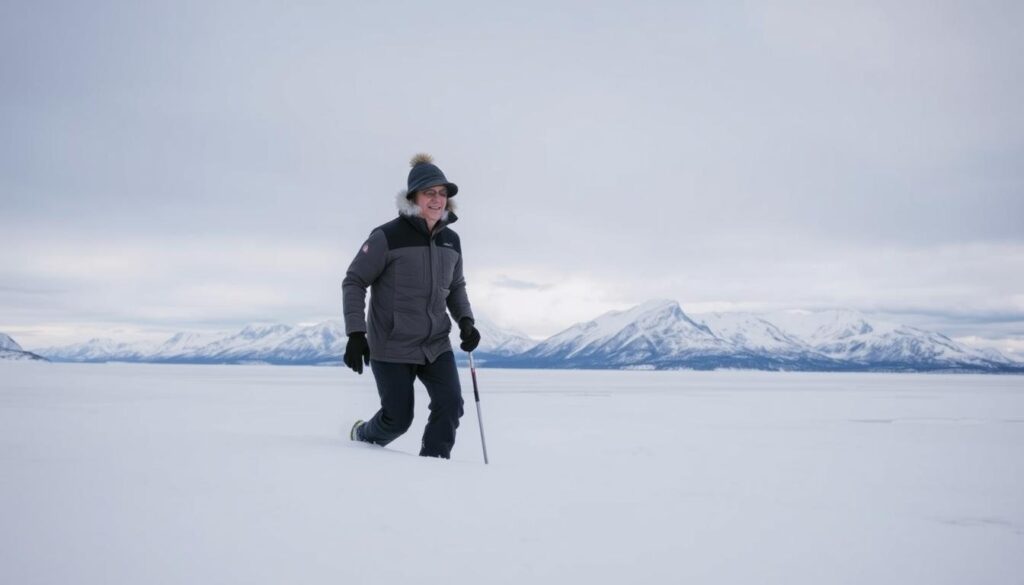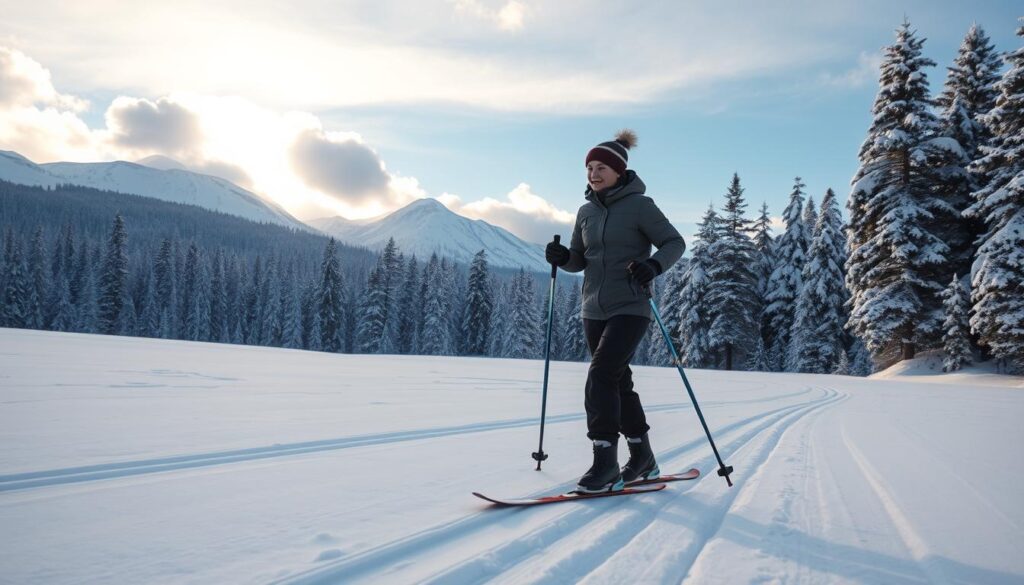When temperatures plummet and daylight vanishes, how do you maintain wellness in one of Earth’s harshest climates? The extreme cold and endless nights of an Alaskan winter create unique hurdles for staying active and energized. Without intentional strategies, it’s easy to fall into habits that undermine progress.
We’ve discovered that adapting routines to the environment is critical. Shortened days disrupt sleep cycles, while frigid weather often limits outdoor movement. This combination can weaken motivation, making it harder to prioritize health goals. But it’s not impossible—local programs and seasonal adjustments offer practical solutions.
Our approach combines nutrition, indoor activities, and mindset shifts tailored to this climate. For example, using a personalized health calculator helps track progress without rigid diets. We focus on sustainable methods that respect the body’s needs during these demanding months.
This journey isn’t about perfection. It’s about building resilience through small, consistent choices. Let’s explore how to thrive when everything around you seems designed to slow you down.
Key Takeaways
- Alaska’s extreme winters demand customized strategies for maintaining wellness.
- Reduced daylight and freezing temperatures directly impact motivation and activity levels.
- Indoor exercises and nutrient-dense meals help counteract seasonal challenges.
- Tracking tools like health calculators provide clarity without strict restrictions.
- Consistency matters more than intensity in harsh conditions.
Understanding the Unique Challenges of Winter in Alaska
Navigating wellness during months of darkness and cold isn’t intuitive—it’s a learned skill here. Seasonal shifts alter everything from daily schedules to energy levels, creating invisible barriers to staying active. Let’s unpack why this environment demands creative solutions.
How Seasonal Changes Affect Our Weight
Shorter days disrupt circadian rhythms, reducing sleep quality by up to 30% according to local studies. This fatigue makes outdoor exercise feel daunting, especially when temperatures drop below freezing. Many Alaskans report replacing morning walks with sedentary habits, unintentionally cutting activity levels.
The Impact of Cold and Darkness on Our Motivation
Frigid air and limited sunlight trigger a biological urge to conserve energy—a survival mechanism that clashes with modern health goals. One Fairbanks program found participants gained 25% more steps by scheduling ten-minute indoor activity bursts between tasks. “Breaking movement into micro-sessions helps bypass the mental block,” notes their coach.
Simple adjustments matter. Using stairs instead of elevators or streaming yoga videos during lunch counters the slump. Prioritizing protein-rich meals also stabilizes energy, making it easier to choose exercise over inertia when motivation wanes.
Effective Weight management in Alaska winters Techniques
Long-term success in harsh climates isn’t about drastic changes but repeatable routines. Structured approaches spanning several months yield better results than short-term fixes. Anchorage’s community fitness data shows 68% of participants maintain progress when following a six-month plan.
Repeating Proven Strategies for Consistent Results
Local programs like Fairbanks’ Winter Warriors combine indoor workouts with nutrition workshops. Attending weekly classes creates accountability—a key factor when temperatures drop. One member shared: “Showing up, even for 20 minutes, keeps the momentum alive.”
Setting Realistic Goals and Tracking Progress
Instead of aiming for daily gym sessions, start with three 30-minute time blocks weekly. Apps like FitAlaska allow users to log meals and movement, revealing patterns over months. Coaches emphasize celebrating small wins: “A 5% improvement each week compounds into life-changing habits.”
Pairing with a program buddy increases adherence by 40%, according to Juneau Health Center. Focus on incremental gains—like adding five minutes to walks—to build resilience against seasonal slumps.
Practical Health and Fitness Tips for Alaska Winters
Maintaining vitality during months of limited sunlight requires smart adjustments to daily routines. Short daylight hours and freezing temperatures demand creative ways to stay energized. Here’s how to adapt without sacrificing comfort.
Incorporating Outdoor Activities Even in Cold Weather
Bundle up and get outside during daylight breaks—even 15 minutes boosts mood and metabolism. Layer clothing for warmth and schedule walks around noon when temperatures peak. “Movement is medicine against winter lethargy,” says Anchorage fitness coach Mara Kincaid.
Use work breaks for quick laps around the block or snowshoeing sessions. Track activity hours with apps to ensure consistency. Pair outdoor time with errands—walk to the grocery store or shovel snow mindfully.
Choosing Smart Nutritional Options and Caffeine Alternatives
Swap afternoon coffee with roasted dandelion tea or golden milk. These options reduce jitters while warming the body. Start mornings with hot water and lemon to kickstart digestion naturally.
Plan protein-rich snacks like nuts or hard-boiled eggs every three hours. This stabilizes energy better than sugary treats. Batch-cook soups with lentils or beans for easy, nutrient-dense meals during hectic days.
Small shifts—like hydrating before meals or eating colorful veggies first—add up. Pair these tips with scheduled movement breaks to create a resilient winter routine.
Building Community and Utilizing Free Health Programs
Strong communities thrive when neighbors unite around shared goals—especially during challenging seasons. Local initiatives across the state prove that collective effort transforms individual struggles into group victories.
Leveraging Local Health Resources and Coaching Support
Alaska’s Fresh Start campaign demonstrates how free coaching and tools create lasting change. Participants receive blood pressure cuffs, scales, and personalized plans. One parent shared: “Tracking my steps with the group helped me include my kids in evening walks—we laugh more now.”
Structured programs blend work and play to reduce depression risks. Evening Zumba classes at community centers or weekend family snowshoe events make fitness social. Data shows participants report 30% higher life satisfaction after six weeks.
| Program Feature | Benefit | Participation Boost |
|---|---|---|
| Free Coaching | Personalized nutrition plans | 58% |
| Group Walks | Reduces isolation | 42% |
| Loaner Gear | Overcomes cost barriers | 67% |
| Family Events | Engages kids | 83% |
Even harsh weather can’t stop progress when support systems exist. Juneau’s Winter Warriors program saw members lose 500 collective pounds last year through gym partnerships and potluck nutrition workshops. “Small steps build unstoppable momentum,” notes their coordinator.
Balancing work and health becomes easier with lunchtime walking clubs or desk yoga challenges. These efforts combat depression while strengthening community bonds—proving that better life quality starts together.
Wrapping Up Our Journey to Sustainable Weight Management
Thriving during the coldest months starts with recognizing that small efforts create lasting change. Every minute spent moving or choosing nutrient-rich foods builds resilience against seasonal hurdles. Consistency—not perfection—fuels progress that matters over a full year.
We’ve seen how ten-minute activity bursts, smart meal prep, and community support counterbalance harsh conditions. These strategies work because they fit real life. Tracking small wins helps maintain momentum when motivation dips.
Remember: five extra minutes of movement daily adds 30 hours of exercise annually. That’s transformative. Pair this with protein-packed snacks and hydration to amplify benefits.
Our journey continues together. Share snowshoeing routes or swap recipes with neighbors—collective effort makes challenges manageable. Keep prioritizing health, even when temperatures plummet. Your future self will thank you.
Ready to take the next step? Start today. Layer up for a brisk walk or try one new winter recipe. Progress matters most when it’s sustainable.



